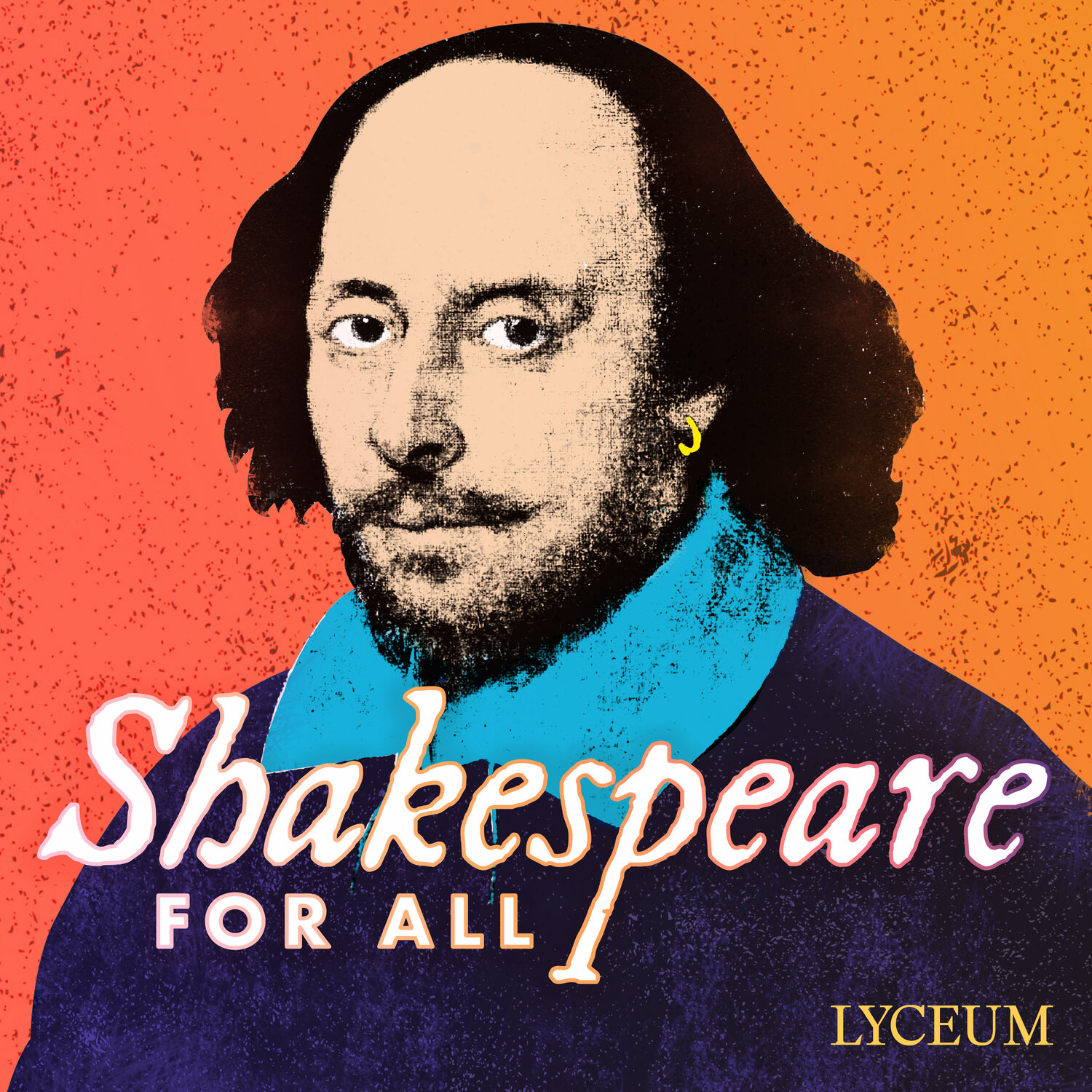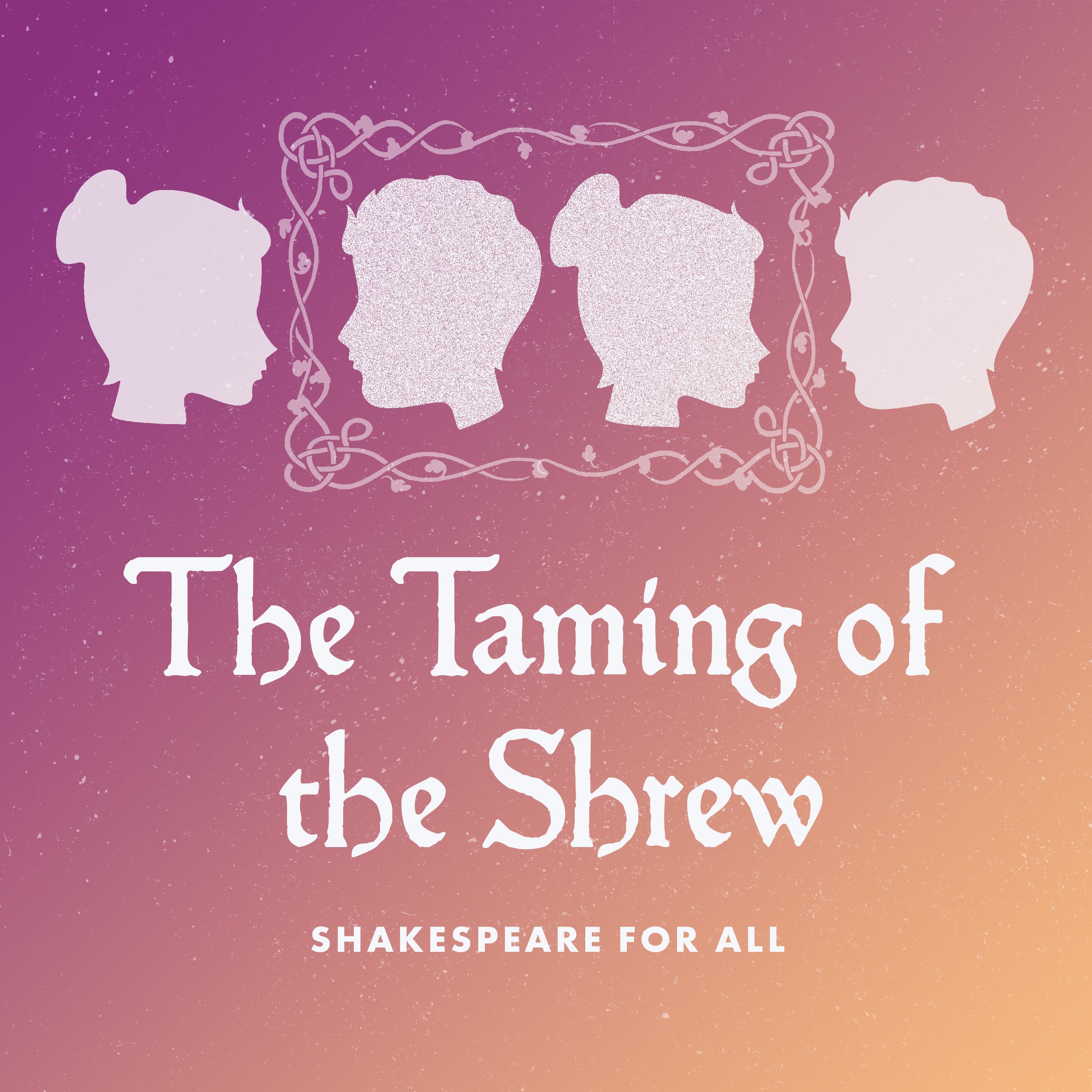The Taming of the Shrew
“IN HER OWN HUMOUR”
What You'll Learn
The story of The Taming of the Shrew and its early modern and contemporary contexts
How the play represents and makes ambiguous the central couple and their relationship
What kind of interpretive freedom we find in Shakespeare’s plays and why it’s valuable
Course Outline
Episode 1: Summary of the play with commentary
Episode 2: Analysis of the play’s characters, its open interpretive questions, and of how readers have re-interpreted the play
Episode 3: Key speeches from the play, performed by actors in two different ways, with discussion
Works Consulted for this Course
Garber, Marjorie B. Shakespeare After All. New York: Pantheon Books, 2004.
Howard, Jean E. “Introduction,” The Taming of the Shrew, in Shakespeare, William. The Norton Shakespeare. Edited by Stephen Greenblatt, Walter Cohen, Suzanne Gossett, Jean E. Howard, Katharine Eisaman Maus and Gordon McMullan. 3rd ed. New York: W. W. Norton & Company, 2016.
Newman, Karen. “A Modern Perspective: The Taming of the Shrew.” Folger Shakespeare Library. <https://shakespeare.folger.edu/shakespeares-works/the-taming-of-the-shrew/the-taming-of-the-shrew-a-modern-perspective/>
Shakespeare, William. The Taming of the Shrew. Edited by Jonathan Bate and Eric Rasmussen. The RSC Shakespeare. New York: Modern Library, 2010.
Shakespeare, William. The Taming of the Shrew. Edited by Barbara Hogdon. The Arden Shakespeare. London: A&C Black Publishers Ltd, 2010.
Smith, Emma. This Is Shakespeare. New York: Pantheon Books, 2020.
The Taming of the Shrew is one of Shakespeare’s most controversial and ambiguous comedies. Written in the early 1590s, it purports to tell the story of how a “shrew,” the strong-willed Katherine, is “tamed” by the even stronger-willed fortune hunter Petruchio. Petruchio marries Katherine and, in the eyes of onlookers, seem to “kill[] her in her own humour.” But the play leaves us wondering whether Katherine really is tamed – and whether Petruchio, Shakespeare, or Shakespeare’s own audiences really wanted her to be. As much as this play draws critical fire, it continues to draw artists’ and audiences’ attention as we return to this play again and again to ask our own questions and make our own statements about gender and gender roles. In this course, you’ll learn the story of The Taming of the Shrew, explore the relationship between Katherine and Petruchio and the many possible ways of interpreting it, and discuss what the play reveals about what we need from theatre and from Shakespeare.
In Part 1, you’ll be guided through a detailed account of the story with commentary by Emma Smith, Professor of Shakespeare Studies at the University of Oxford. You’ll see how Shakespeare embeds, within the text and physical action of the play, crucial questions about Katherine and Petruchio that the text itself doesn’t answer. This summary is told using the language of the play itself, placing key quotations in context to help you understand where these lines come from and what they mean.
Part 2 begins by exploring the Katherine-Petruchio relationship in greater depth, examining the most positive and the most negative possible interpretations of it and the different ways of understanding the “taming” plot. It goes on to discuss how Shakespeare’s first audiences might have reacted to the play (and why they might not have reacted in the way we expect), and how modern productions stage, adapt, and re-imagine the story, deploying the interpretive freedom that, in Professor Smith’s view, “really is Shakesepare.”
Part 3 features close-readings of two key speeches, one from Petruchio and one from Katherine. These speeches are performed in two different ways: as originally written, and with the gender pronouns reversed as they were in the 2019 RSC production of Taming, whose lead actors perform the speeches. These double performances help us reflect on our own reactions to the play’s provocative take on gender.
You can hear the third episode of this course for free below. For access to the full course and all of Season Two, subscribe today on Himalaya Learning. Use the promo code BARD for 30 days free.
Speeches and Performers
Petruchio/Petruchia, Act 4, “Thus have I politicly begun my reign …” (Claire Price) (two versions)
Katherine, Act 5, “Fie, fie! Unknit that threat’ning unkind brow” (Joseph Arkley) (two versions)
An Interview with Claire Price
Claire Price, who recorded for Petruchio/Petruchia in our Episode 3, played Petruchia in the 2019 Royal Shakespeare Company production of The Taming of the Shrew, directed by Justin Audibert. This production flipped the genders of most of the play’s characters, including the lead characters Petruchio and Katherine. Click here for an interview with Claire Price, conducted by Andrew Smith, about her character and this groundbreaking production.
Click here to view a YouTube video of Claire Price and Joseph Arkley in Act 2, Scene 1, of The Taming of the Shrew at the RSC.
Course Instructor
Emma Smith
Professor of Shakespeare Studies at the University of Oxford
Emma Smith is Professor of Shakespeare Studies at Hertford College at the University of Oxford. She is a scholar of Shakespeare and early modern drama, whose research interests span performance, book history, histories of reading, reception and criticism of Shakespeare, and pedagogy. Professor Smith has written and edited numerous works for a range of audiences, including monographs on Shakespeare’s First Folio (Shakespeare’s First Folio: Four Centuries of an Iconic Book; The Making of the First Folio), companions and introductions to Shakespeare’s work (The Cambridge Guide to Shakespeare; The Cambridge Introduction to Shakespeare) and books written for a general readership (This Is Shakespeare; Thirty Great Myths About Shakespeare [with Laurie Maguire]). Professor Smith aims to share scholarly research with the widest possible audience, through books, articles, and lectures, and also through consultation on films and theatre productions, radio and media appearances, and podcasts, including her acclaimed lecture series Approaching Shakespeare.



